Why is “The Americans” so complicated? Is this to the show’s advantage?
Quick Answer: Now in its fourth season, The Americans is the story of married KGB agents posing as a normal family in suburban 1980s Virginia. With an exceedingly complex web of characters, plot lines, and Cold War-era details, The Americans is one of the most complicated and challenging shows on television. It seems that the multiple plot lines are a double-edged sword. They might make the show more compelling, but they also make it more difficult to follow. However, in an era of mind-numbing reality shows and sitcoms that don’t require our full attention, The Americans’ willingness to challenge its viewers makes it one of the most rewarding shows on television.
The complexity of The Americans (2013 - ) is a subject that I have written about in the past, but it is one, I think, that is worth revisiting.
For the uninitiated, The Americans, now in the middle of its fourth season on FX, is the story of married KGB agents, Philip and Elizabeth Jennings (Keri Russell; Matthew Rhys), posing as ordinary suburban Virginia travel agents in the early 1980s. They have two children, 15-year-old Paige (Holly Taylor) and the slightly younger Henry (Keidrich Sellati). They live next door to FBI agent Stan (Noah Emmerich), who, unaware of his neighbors’ secret, considers Philip his best friend. The Jennings’ handlers, Claudia (Margo Martindale) and Gabriel (Frank Langella), send them on missions where they “work” various assets, generally wearing disguises and operating under a variety of aliases.
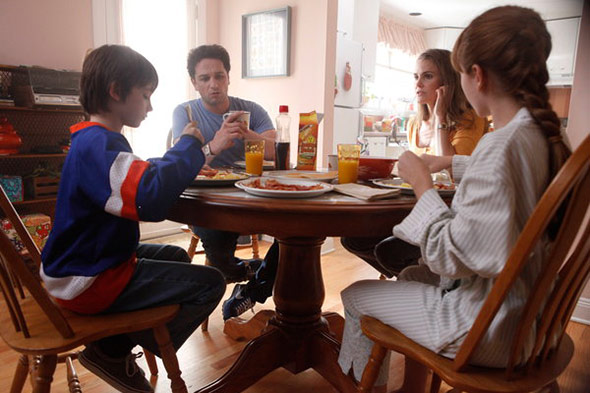
Keidrich Sellati, Matthew Rhys, Keri Russell and Holly Taylor in The Americans
The spies use friendship, sex, manipulation, or violence, depending on the circumstances, in order to gain information about and access to American intelligence. They also aim to interact with representatives from countries allied with the USSR. Among these assets is Martha (Alison Wright), a lonely FBI secretary who Philip, posing as businessman “Clark,” woos and marries in the first season.
The amazing thing, though, is just how many stories we viewers are expected to follow. Here’s a quick rundown of the plotlines that The Americans is currently juggling, though they are always subject to change. Needless to say, spoilers abound:
1. The story of Martha—spy Philip’s fake second wife, a secretary for the FBI he has been using to spy—has come to a head and can’t possibly end well for anyone, especially Martha. Elizabeth now realizes Philip has feelings for Martha. Can their marriage withstand this kind of betrayal? At what point will Stan realize that “Clark”—Martha’s supposed husband—is actually his next-door neighbor, and seemingly only friend, Philip?
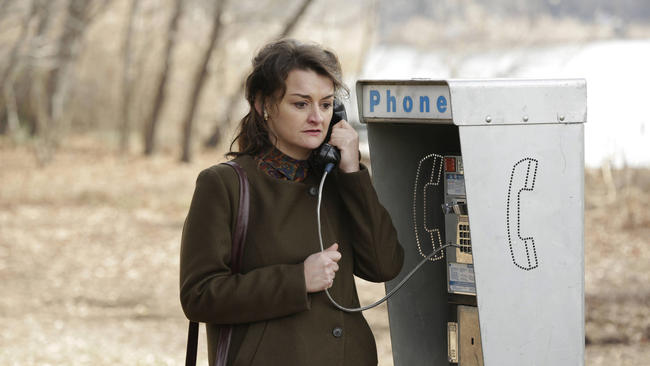
Alison Wright as Martha
2. Paige, the teen daughter whom the KGB wants to train as a “second generation spy,” is melting down. She now distrusts her minister, Pastor Tim, who took her confession that her parents were spies and shared it with his blabby wife, Alice. Tim and Alice’s newfound knowledge is a ticking time bomb for all of them. Which pair is in more danger?
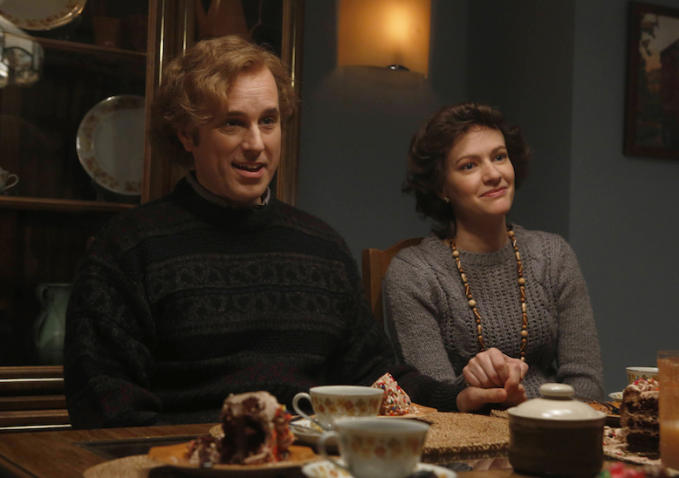
Kelly AuCoin as Pastor Tim and Suzy Jane Hunt as Alice
3. Will Paige’s single beer lead to a drinking problem, or will she tell Stan’s son Matthew what she knows? If so, will he tell his dad (who despite being in the FBI is so unobservant he doesn’t even notice his beers are missing)? Or will she tell her younger brother Henry, who knows something is wrong, is mad that his parents reneged on a trip to EPCOT, and would be a far better and more enthusiastic spy than Paige?
4. Now that Nina is gone, what’s up with Oleg? He’s still working with Arkady and the mysterious Tatiana, who seems to be “working” him, but will he feel so betrayed he will defect, or will he start turning information over to fellow mourner Stan?
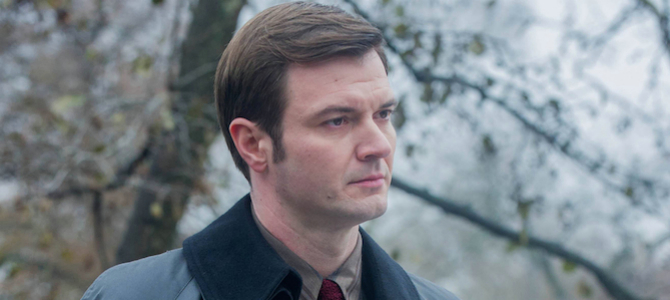
Costa Ronin as Oleg
5. New contact William, a fellow illegal (we think), is supplying the Jennings with chemical weapon samples in the form of an infected rat, now on the way to the USSR. Has the KGB turned away from wanting to know about missiles and bombers, or is that still on the table?
6. Who is Young Hee, Elizabeth’s new asset who sells Mary Kay and who she appears to see as a real friend? How will she fit into the story? Will her or her husband’s Korean background prove to be significant?
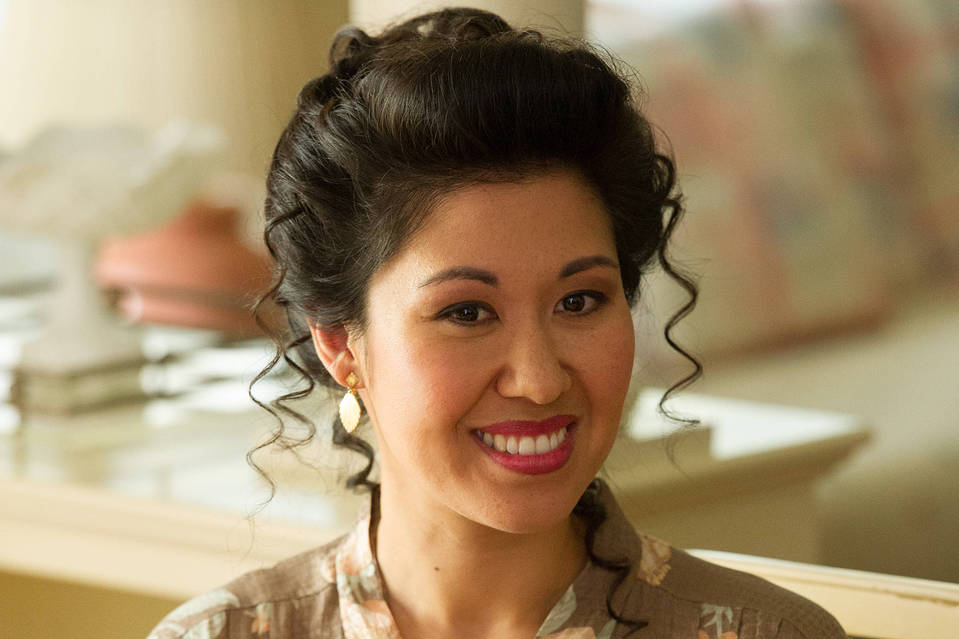
Ruthie Ann Miles as Young Hee
7. Hans the South African trainee is still around but appears to be remarkably unobservant. How will that imperil the Jennings?
8. Although we hadn’t heard her name or seen her at all in Season 4, it’s clear from a brief mention that Kimmie, the 15-year-old girl whose house Philip bugs and who wants to sleep with him, is still around. Will we see her?
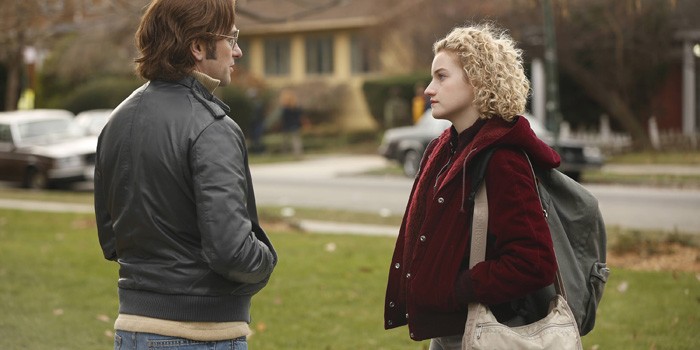
Matthew Rhys as Philip Jennings and Julia Garner as Kimmie
9. What will the KGB do about replacing Lisa, Elizabeth’s friend she met in disguise at AA who was going to provide them with classified data?
One of the admirable qualities of The Americans is that it is not afraid to keep stories on the backburner for a while. Sometimes it’s confusing when a character we haven’t seen in over a year returns or is mentioned, but many other shows spoon-feed us information, even supplying montages from earlier in the same episode to remind us what the character is thinking about. Conversely, the team behind The Americans trusts its audiences to remember. The writers and producers assume that the viewers possess a certain level of intelligence and capacity for understanding complex storylines. In an era of mind-numbing reality shows and sitcoms that don’t require our full attention, The Americans’ willingness to remain complicated and challenge its viewers makes it one of the most rewarding shows on television.
The Americans is unusual for TV in that it follows multiple sets of characters that never—or nearly never—interact. Most shows take great pains to get all their characters to team up in various combinations, often by putting them in the same room, frequently in the form of elaborate parties (teens on TV go to a shocking number of the same parties as their parents and teachers). But this show has kept the Jennings and their handlers entirely separate from those who work at the Rezidentura. Nina, for example, was a vital character that never met any of the Jennings. Their stories are all about the Cold War in the abstract, but the day-to-day details are treated as separate stories. The recent episode “Travel Agents” (S4:E7)—which involved the FBI and the Jennings trying to find a runaway Martha while the Rezindentura workers arranged for her extraction from the U.S.—focused almost entirely on the Martha story, yet it involved almost everyone in the cast. It’s certainly why the underage kids were alone drinking beer.
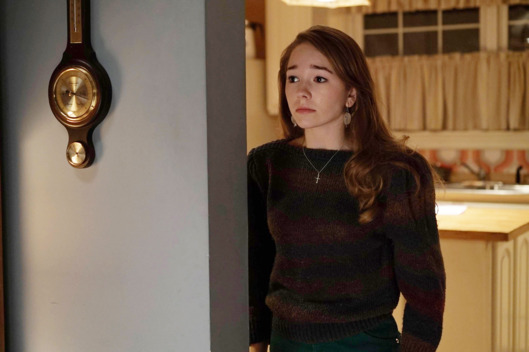
Holly Taylor as Paige Jennings
My partner has a Ph.D. in Political Science and was paying a ton of attention to the news in 1983, when The Americans takes place. As I was only 15 at the time, I was much more interested in MTV. As such, we watch the show completely differently. If I were watching alone I would probably have tuned out a lot of the political jargon and focused almost entirely on the show’s interpersonal relationships. However, it turns out the past interplay between Russians and representatives from Afghanistan, Pakistan, El Salvador, Nicaragua, South Africa, and now Korea, complicated as may be, is hugely important and revealing about the global landscape of the time. My partner had to explain at length before I could understand, for example, why the South Africans were part of the story at all. While he may love the show’s geopolitical leanings, not everyone does. As a media studies scholar, I myself am more interested in the background of the show. Like-minded viewers may have to invest a lot more than just the hour to watch each episode, as they may have to go to multiple websites to find information about the real-life events that inspired each storyline.
Certainly there have been other detail-oriented period shows in recent years, such as Mad Men (2007 - 2015) and Halt and Catch Fire (2014 - ). They both take place in the relatively recent past and focus on advertising and tech, respectively. There were real-life events that drove episodes of each, such as the assassination of Martin Luther King, the arrival of the Beatles and the premier of the first Mac computer. These events might have sent viewers off to Wikipedia or YouTube, but while they set the tone for their respective episodes, the focal point of each was the growth of the characters involved. Similarly, while geopolitics are at the center of The Americans, the focus remains on the tribulations of the Jennings marriage.
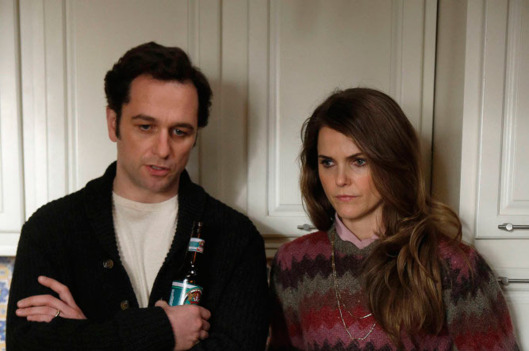
Matthew Rhys and Keri Russell
The Jennings were multitasking long before it became a way of life for the rest of us. It seems, however, that the multiple plot lines are a double-edged sword. They might make the show more compelling, but they also make it more difficult to follow. Does the show have low ratings because many viewers who live in today’s world simply don’t have the attention span for a show this convoluted? For those willing to take the time and energy to absorb a show of this complexity, the reward is a show that satisfies the need for geopolitical thrills, family drama and intellectual rigor.

